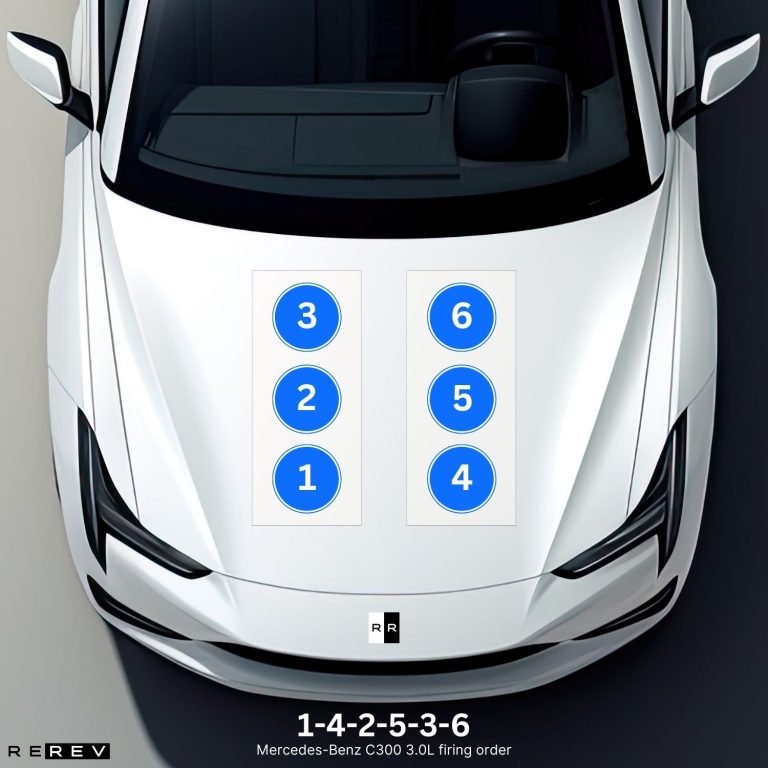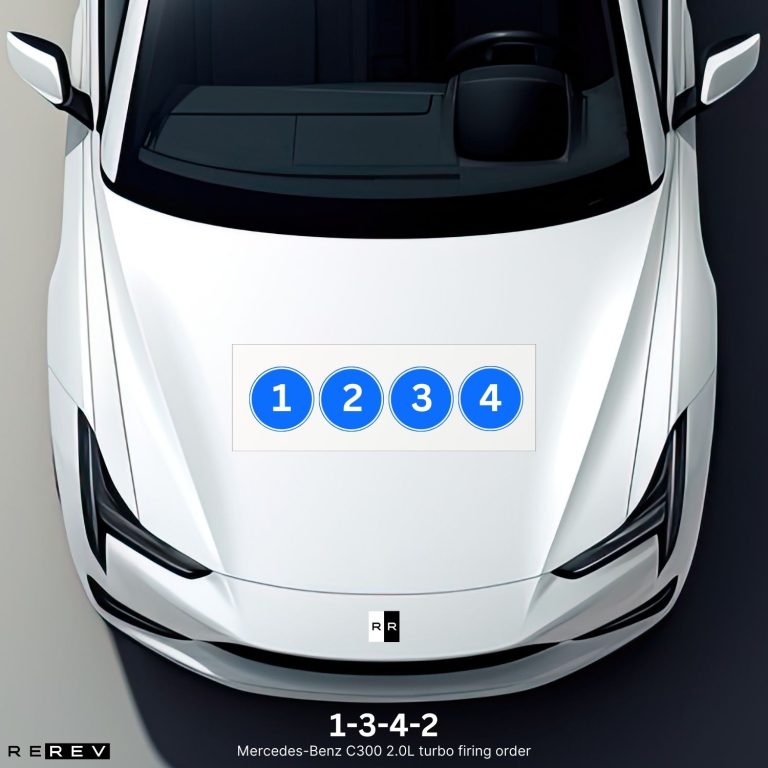Mercedes-Benz C300 (2007-2023) firing order — what is it?

The C-class has always been considered one of the best Mercedes models due to its practicality and sleek sporty design. However, it faced some issues with the engine options and since the C300 is the most frequent designation for recent models, our team decided to step in and help.
We’ll give you a complete guide on Mercedes-Benz C300 (2007-2023) firing order as we go through the engine options and discuss their firing patterns and cylinder positions for easier application.
| C300 YEARS | ENGINE | FIRING ORDER |
|---|---|---|
| 3rd Gen (2007-2013) | 3.0L V6 | 1-4-2-5-3-6 |
| 4th Gen (2014-2020) | 2.0L turbo | 1-3-4-2 |
| 5th Gen (2021-present) | 2.0L hybrid | 1-3-4-2 |
Third-generation Mercedes C300 (2007-2013) firing order
The third-gen of the C-Class in general was the first one to feature a C300 mark on vehicles equipped with a V6 engine. Still, it’s the only generation of the C300 where the “300” mark reflected the cubic capacity, so we’ll start with the 3.0L engine for this model first.
Mercedes-Benz C300 3.0L firing order

The Mercedes-Benz C300 3.0L firing order is 1-4-2-5-3-6 and it’s the only engine option with a genuine 3.0-liter capacity as the C300 designation states. That means the engine’s cylinders are arranged in two cylinder banks with three cylinders each.
So, the driver’s side bank houses cylinders 4, 5, and 6 since the first three cylinders are arranged from 1 to 3 on the passenger’s side. It’s important to note that all the cylinders are arranged front to rear within the engine bay.
Fourth-generation Mercedes C300 (2014-2020) firing order
The fourth-gen C-Class was the first one to feature a C300 mark for a model equiped with an engine below the 3.0-liter capacity. It was a turbocharged 2.0-liter which kept up with the power supply that the previous engine had, but it featured a different cylinder layout and firing pattern.
Mercedes-Benz C300 2.0L turbo firing order

The Mercedes-Benz C300 2.0L turbo firing order is 1-3-4-2 and it’s a common firing pattern for a four-cylinder engine. This one features a turbocharger which fills in for the power output difference between this one and a 3.0L V6 engine.
However that also means there’s a different cylinder arrangement for this engine since it’s a straight-four powertrain. So, all the cylinders are arranged in order from 1 to 4 in a straigth line, with the first cylinder being on the left side, and the fourth cylinder being on the right side.
Fifth-generation Mercedes-Benz C300 (2021-present) firing order
The most recent C-Class model also has a C300 version, only this time there’s a 2.0-liter turbo hybrid under the hood. It’s based on the same 2.0-liter engine we’ve mentioned for the previous generation, only with an addition of an electric component.
So, the Mercedes-Benz C300 (2021-present) firing order is 1-3-4-2 and the cylinders are ordered from 1 to 4 looking at it left to right. The electric motor component doesn’t affect the firing pattern or the cylinder positons of the internal combustion engine.
Our take
Ultimately, we think that this guide on Mercedes-Benz C300 firing order helps you differentiate between the firing patterns for different generations of the model. Make sure to follow up with the cylinder locations and placement within the engine, and you’ll be good to go when the maintenance time comes.